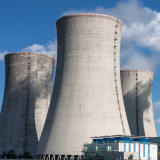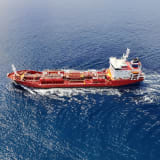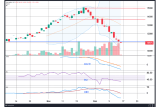Posts
24/04/24
Chemicals Update: Electric Vehicles and the Chemical Tankers Market – a glimpse into a possible future…

At the end of 1Q 2024, there were 31 countries where Electric Vehicles (EVs) comprised at least 5% of the sales of new cars with the list including most of the developed economies, China, Thailand, and Turkey. The 5% threshold is significant for the EV market because it is said to be the tipping point after which mass adoption follows – once there is a critical mass of initial sales, EVs gain wider acceptance, allowing more companies to invest in production and charging infrastructure.
In 2024, sales of passenger electric vehicles are expected to reach 16.7m units, up 20% from 2023. By the end of this year the number of EVs on the road should reach 57m, or about 4% of the entire passenger vehicle fleet. And that’s just the passenger cars segment. The light and heavy-duty commercial vehicles segment saw about 330,000 units delivered last year in China alone. In addition, 1.6m charging points will be added to the already installed 4m and the total electricity which will be dispensed from them this year is expected to be equivalent to the annual electricity consumption of Greece.
At the same time, with about 400 EV manufacturers worldwide, competition is as fierce as it can get and companies are now routinely slashing prices – not only to gain market share but also to survive, thus making the sector ripe for consolidation. With a big share in the production and processing of some of the metals and minerals used in EVs, it is not surprising that China has about 300 EV manufacturers who are expected to introduce 110 new EV models this year with prices starting from as low as USD 10,000.
According to the World Energy Outlook, by 2030 the world energy system would (hopefully) be significantly different from today and would include close to 600m EVs; solar photovoltaic systems generating more electricity than the entire US power system does currently; renewables’ share in the global electricity mix close to 50%, up from 30% today; heat pumps and other electric heating systems outselling fossil fuel boilers globally; and three times as much investment going into new offshore wind projects than into new coal- and gas-fired power plants.All this matters because it is starting to have a growing impact on fuel demand with major implications for the CPP and petrochemicals markets.
In 2022, the world consumed about 102m bbl of crude oil per day, with 45m bbl of that quantity used for road fuels and peaking by 2027. Oil consumption displaced by passenger EVs alone in 2022 was estimated to be about 2m bbl per day, however as the EV fleet grows, this number is expected to rise to over 20m bbls per day by 2040.
Given the long life of ships, the described structural changes will likely affect the long-term fortunes of tankers ordered today at eye-watering prices. With so much oil displaced by EVs by 2040, there would be less petroleum products and blending components moving around and as more swing tonnage starts competing for chemical cargoes, the chemicals tanker market would be impacted too. But reduced volume is just one of the potential outcomes from the wider adoption of EVs. Part of these reduced volumes may need to be transported over shorter distances to regions which will still be lagging behind in EV adoption (for example Africa or South America).
But it’s not all doom and gloom. As EV and other clean technologies use grows worldwide, it creates new demand for chemicals used in the manufacturing of those products with the obvious examples of caustic soda or sulphuric acid. Driven partly by the anticipated drop in global oil consumption, the international diversification of low-cost oil and petrochemicals producers from the Middle East by buying stakes into Chinese petrochemicals companies, may further strengthen China’s position as a competitive exporter of chemicals thus supporting the chemical tankers market. This could be further reinforced by expected closures of older and less efficient capacity in Europe and North America.
By Plamen Aleksandrov, Market Researcher, Chemicals, SSY
Articles
You may also be
interested in
View allGet in touch
Contact us today to find out how our expert team can support your business















